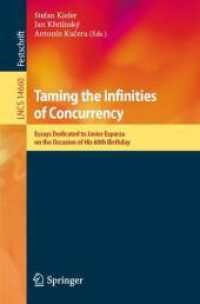- ホーム
- > 洋書
- > 英文書
- > Science / Mathematics
Full Description
The field of visible light communication (VLC) has diverse applications to the end user including streaming audio, video, high-speed data browsing, voice over internet and online gaming. This comprehensive textbook discusses fundamental aspects, research activities and modulation techniques in the field of VLC.
Visible Light Communication: A Comprehensive Theory and Applications with MATLAB® discusses topics including line of sight (LOS) propagation model, non-line of sight (NLOS) propagation model, carrier less amplitude and phase modulation, multiple-input-multiple-output (MIMO), non-linearities of optical sources, orthogonal frequency-division multiple access, non-orthogonal multiple access and single-carrier frequency-division multiple access in depth. Primarily written for senior undergraduate and graduate students in the field of electronics and communication engineering for courses on optical wireless communication and VLC, this book:
Provides up-to-date literature in the field of VLC
Presents MATLAB codes and simulations to help readers understand simulations
Discusses applications of VLC in enabling vehicle to vehicle (V2V) communication
Covers topics including radio frequency (RF) based wireless communications and VLC
Presents modulation formats along with the derivations of probability of error expressions pertaining to different variants of optical OFDM
Contents
1. Brief Overview. 2. VLC Channel Models. 3. Modulation Formats for VLC. 4. Non Linearities of Optical Sources. 5. Multiple Access Schemes and VLC for Smart Cities. 6. Integration of VLC with PLC. 7. VLC for Vehicular Communications. 8. Research Challenges Associated with VLC. 9. References.







